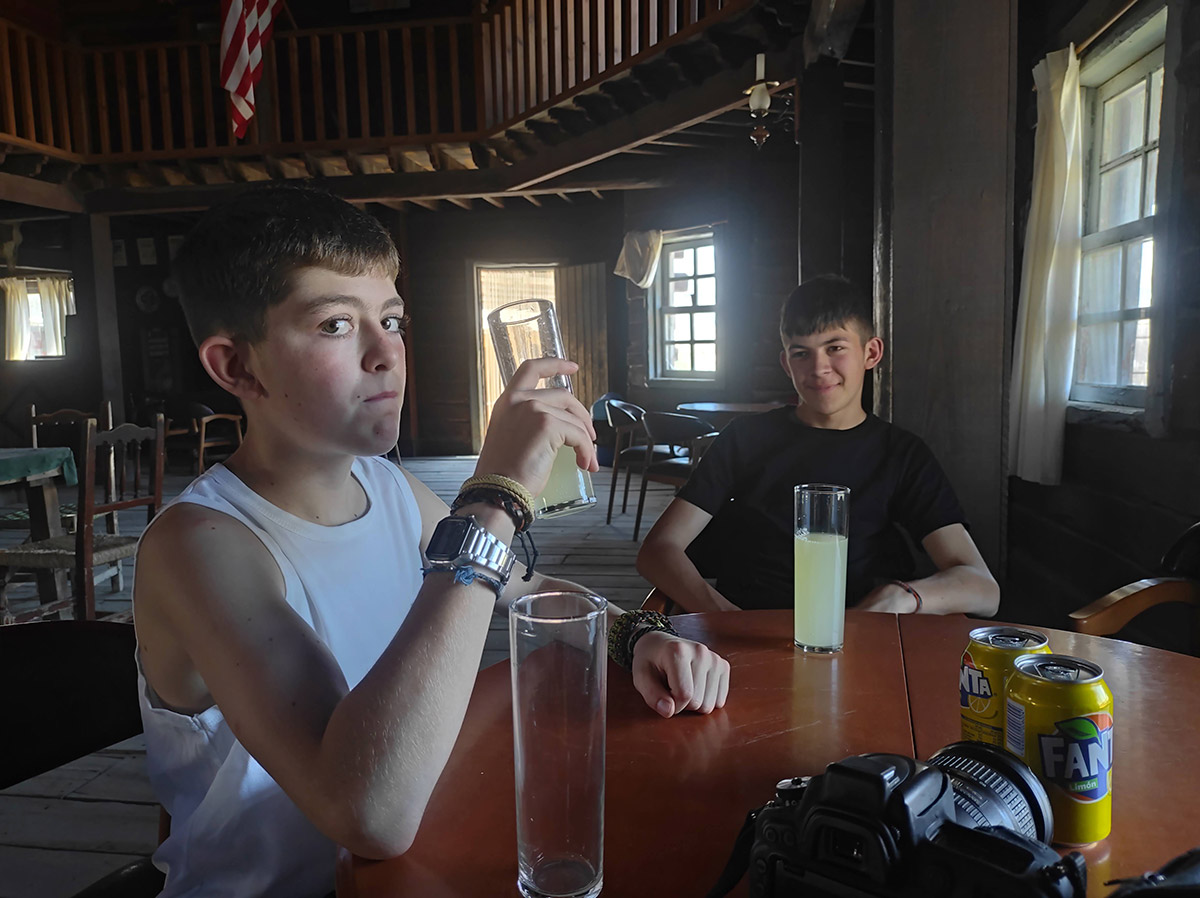THE DIVERSE landscape of Andalucia has long been popular with filmmakers. With its (usually reliable) sunny climate, Moorish architecture, and vistas ranging from “the Wild West” to “the Middle East”, it’s a handy alternative to far-flung sets.
An initiative called Film in Granada has assessed and recommended many local shooting locations, including: Almuñécar, Lentegí, Órgiva, Pampaneira, Bubión, Cúllar, Galera, Huéscar, Freila, Zújar, Cuevas del Campo, Darro, Gorafe, El Valle, Vélez de Benaudalla, Purullena, Marchal, Pórtugos, Trevelez, Bérchules, Torvizcón, Cádiar, Ugíjar, Alfacar y Nivar. That could eventually be good news for residents getting jobs as extras!
‘The Walking Dead’ is about to start filming in Granada this February, with locations being confirmed, and it did employ extras from Granada, with auditions in Seville.
South of Granada has compiled a list of existing films and major TV series and movies filed n Andalucia – either wholly or partly. The government of Andalucia website also has a decent list. If you have a quiet day for binge-watching, why not check out some local flicks you’ve never seen?
Lawrence of Arabia (1962, director David Lean)
One of the classics of epic cinema, this film saw Peter O’Toole sweating theatrically in Almeria; the scenery was masquerading as the Arabian Peninsula. The exact film locations were: Alfonso XIII Hotel in Seville (Cairo Officer’s Club courtyard); El Casino, Avenida de Maria Luisa, Seville; and Playa del Algarrobico, Carboneras, Almería. The film won seven Academy Awards, including Best Picture. It is widely regarded as one of the greatest films ever made. In 1991, it was deemed “culturally, historically, or aesthetically significant” by the United States Library of Congress.

The Good, the Bad and the Ugly (1966, director Sergio Leone)
In this movie, mostly made in Almería, Clint Eastwood, Lee Van Cleef, and Eli Wallach lurk around the Tabernas Desert. They also appear in the now semi-abandoned, ex-mining town of Rodalquilar in Cabo de Gata (this is well worth a visit and take your camera!). The film didn’t win any major awards but it remains one of the most influential westerns of all time. Tourists still seek the old sets in the “Spanish desert”. In Tabernas, Western-themed visitor attractions have evolved, including Oasys MiniHollywood (entry fee and visitor hours apply).
Duck, You Sucker (1971, director Sergio Leone)
Also called ‘A Fistful of Dynamite’ and ‘Once Upon a Time… the Revolution’, this lesser-known Sergio Leone ‘Zapata’ western was filmed extensively in Tabernas Desert as well as the Commercial and Industrial Association and Cervantes Theatre Building, Paseo de Almería. Starring Rod Steiger and James Coburn, the film follows an Irish revolutionary and a Mexican bandit as they become unlikely allies during the Mexican Revolution. Though overshadowed by Leone’s other films, it has since been reappraised as an underrated classic with a strong political undercurrent and one of Ennio Morricone’s most evocative scores.
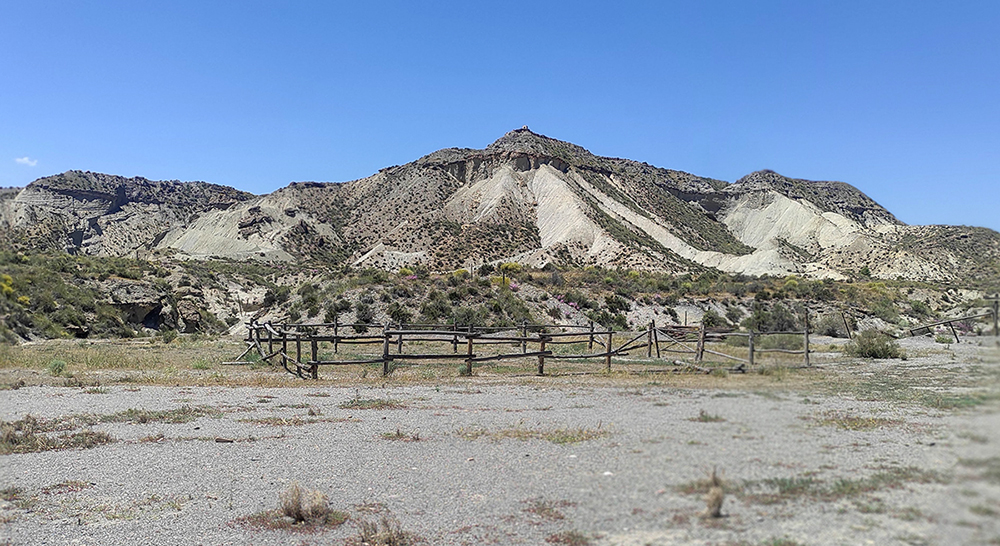
The Last Run (1971, dir. Richard Fleischer)
A getaway driver comes out of retirement for one last job – that could send him to the grave. This crime thriller starring George C. Scott was shot throughout three provinces of Andalucia. Exact locations include: Marbella, Málaga, Güejar Sierra (the boarding house and confession in church scenes), Nerja, Órgiva’s landmark Seven Eye Bridge, and Almeria.
The film captures the region’s winding mountain roads and coastal towns. The local scenery creates an atmospheric backdrop for a story of betrayal and one last job gone wrong. Although not a major box office success, The Last Run is renowned for its moody cinematography and Scott’s brooding performance.
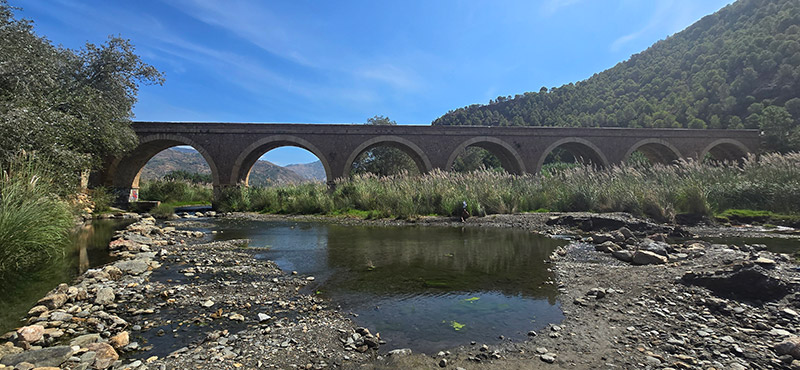
Straight to Hell (1987, director Alex Cox)
This comedy western (a parody) features Joe Strummer (frontman of The Clash), Courtney Love, and Dick Rude. There are cameos by the likes of Grace Jones, Elvis Costello, the Pogues and Amazulu (remember them?). Filmed in Almeria during just four weeks, ‘Straight to Hell’ embraces the desert landscape that once hosted classic westerns but adds a chaotic twist. The film was largely panned on release but has since gained cult status, especially amongst fans of The Clash and the post-punk scene.
Indiana Jones and the Last Crusade (1989, director Steven Spielberg)
Before CGI came into play (its successor now being AI), real locations mattered to movies. For this Indiana Jones flick, Sean Connery and Harrison Ford were filmed in Granada’s Palacio de los Córdova and Almería’s Cabo de Gata, including the gorgeous Monsul beach (well worth a visit), Rodalquilar mines, and Los Escuellos (literally the reporter’s favourite Cabo de Gata destination!). The ‘Berlin Airport’ scene was filmed in Guadix railway station. While the movie was overshadowed by the first Indiana Jones installment, it was still a major box office success. It proved that Sean Connery could convincingly play Harrison Ford’s father, despite a mere 12-year age gap between the two men.
South from Granada (2003, director Fernando Colomo)
Also known as ‘Al Sur de Granada’, the film depicts the author’s book/memoir of the same name. It follows his notable time spent in Yegen, La Alpujarra during the 1920s. The region was far more ‘basic’ than it is today. For example, people walked vast distances to Motril, Malaga and Granda, sometimes with dysentry! Brennan sought inspiration, solitude, local culture, and visits from members of the Bloomsbury set. According to the movie, he also sought a complicated romance. The film was shot in La Alpujarra, with the white villages of Yegen and Pampaneira as key locations. The finished movie wasn’t a blockbuster and wasn’t entirely true to the original memoir. A bit lightweight, perhaps.
Cerrar los Ojos (2003, director Víctor Erice)
Víctor Erice’s long-awaited return to feature filmmaking, ‘Cerrar los Ojos’, is a meditative drama about identity, memory, and the nature of cinema itself. The plot goes as follows: a filmmaker is investigating the mysterious disappearance of an actor decades earlier, leading him through a web of old footage, personal recollections, and lost time. This movie was produced locally by Tandem Films, Pecado Films and Nautilus and stars Manolo Solo, José Coronado, María León and Ana Torrent. Erice filmed during two weeks in October 2023 in various locations in Gualchos-Castell de Ferro, Dúrcal and Nigüelas.
The Business (2005, director Nick Love)
This is a must-watch and one of our personal favourites. Danny Dyer and Tamer Hassan star in the 1980s, Thatcher-era crime drama, set on the “Costa del Crime” of Spain. It features dodgy dealings, drugs, guns, shirtless men, cute girls, the obligatory nutter, people losing the plot, and (later on) some very questionable fashion choices! Much of it was filmed in Málaga and the Costa del Sol, as well as Almuñécar and La Línea de la Concepción, Cádiz. Nick Love was clearly playing on the region’s reputation as a sun-drenched refuge for British gangsters. A cult favourite with a cool 80s throwback soundtrack and loud cockney accents. Don’t miss it!
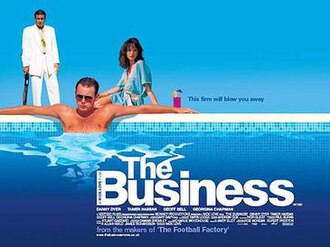
Summer Rain (2006, director Antonio Banderas)
This romantic drama is also called ‘El camino de los ingleses’ (‘Englishmen’s Road’). Antonio Banderas returned to his home city of Málaga to direct this coming-of-age drama about a young writer experiencing love, loss, and angst in 1970s Spain. The film is a something of a love letter to Málaga, with scenes in the historic centre. Some locations include: Plaza Maestro Artola, the Cathedral and Santa Lucía Street and Castillo de Gibralfaro. Critics were polite but not overly enthusiastic, although it did well in Spanish-speaking territories.
The Girl with the Dragon Tattoo (2011, diector. David Fincher)
While mostly associated with chilly Swedish landscapes, this adaptation of Stieg Larsson’s novel had its final scene filmed in Málaga. The specific location was the Paseo Pablo Ruiz Picasso promenade, opposite Hotel Las Vegas, overlooking the Playa La Malagueta beach. This was thought to capture the essence of the Cayman Islands. The film was a critical success, with Rooney Mara’s performance as Lisbeth Salander earning an Oscar nomination.
Exodus: Gods and Kings (2014, director Ridley Scott)
Ridley Scott’s biblical epic is inspired by the the Hebrews exiting Egypt, led by Moses, and told by the Book of Exodus. The flick turned Almería’s Tabernas Desert (that location again!) into ancient Egypt. Filming was mainly on the Spanish site, starting October 2013, with additional filming at Pinewood Studios, UK. Reviews of Scott’s movie were mixed, with some people praising the visuals while others said the pacing was amiss.
Mar de Plástico (2015-2017, Antena 3)
This is another firm favourite – a bingeworthy ‘telenovela’ that you won’t be able to turn off (on Netflix). In short, it’s a Spanish crime series set in the sun-drenched but troubled agricultural landscape of Almería, with the false location of “Campoamargo” (bitter land!). The show explores racial tensions, corruption, and murder in a fictionalised version of the region’s plastic-covered greenhouses. If you’re a fan of Cabo de Gata, you’ve probably visited some of the locations already. These are: San Isidro, Campohermoso, Tabernas, El Ejido, Balerma, La Mojonera, Vícar and Almería. Good stuff!
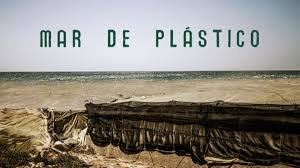
Off Course (2015, dir. Nacho G. Velilla)
A comedy about Spanish millennials struggling to make ends meet, ‘Off Course (Perdiendo el Norte)’ follows two young men who move to Berlin for a better life. However, their destination isn’t as welcoming as they expected. While much of the film was shot in Germany, several scenes were made on the Almerian coastline. The film was a commercial success in Spain, resonating with a generation dealing with economic crisis and job insecurity. However, it wasn’t really an international breakthrough.
Risen (2016, director Kevin Reynolds)
This biblical R-12 drama, starring Joseph Fiennes as a Roman soldier investigating the disappearance of Jesus. The movie used Almería’s desert landscapes, the Moorish Alcazaba de Almería, and the beaches of San José at Cabo de Gato. The film received lukewarm reviews but was appreciated in religious circles.
Terminator: Dark Fate (2019, director Tim Miller)
Because nothing says ‘post-apocalyptic future’ like an Andalucian beach, this sci-fi sequel featured action sequences shot in Almeria’s Isleta del Moro, as well as in Cartagena, Murcia. Despite the return of Linda Hamilton and Arnold Schwarzenegger, the film didn’t perform particularly well at the box office, suggesting that even killer robots need a stronger script.
Game of Thrones (2011-2019, HBO)
The medieval fantasy series, ‘Game of Thrones’, used some film locations in Andalucia. In 2014, the Roman bridge in Cordoba became the long bridge adjoining the two areas of free city, Volantis, via the Rhoyne River. Built in the 1st century AD, the spectacular Roman bridge is 247 metres long and has 16 arches. The special effects team crowned it with some wooden structures. The series received numerous awards.
Society of the Snow (2023, director J.A. Bayona)
This popular survival thriller revisits the true story of the 1972 Andes plane crash (Flight 571) involving a Uruguayan rugby team. It depicts the real-life events, starting from the day Uruguay’s Old Christians Club rugby team departed for a match in Santiago, Chile – and the plane went down in the peaks. The story ends 72 days later when 16 survivors finally make it home. They had survived by eating parts of frozen corpses… The exterior shots of the Andes mountains were filmed in the Valley of Tears in Argentina, at the real crash site. The rest of the film was shot within Sierra Nevada Ski Station in Granada. The film was praised for its emotional depth and realism, and received multiple award nominations.
